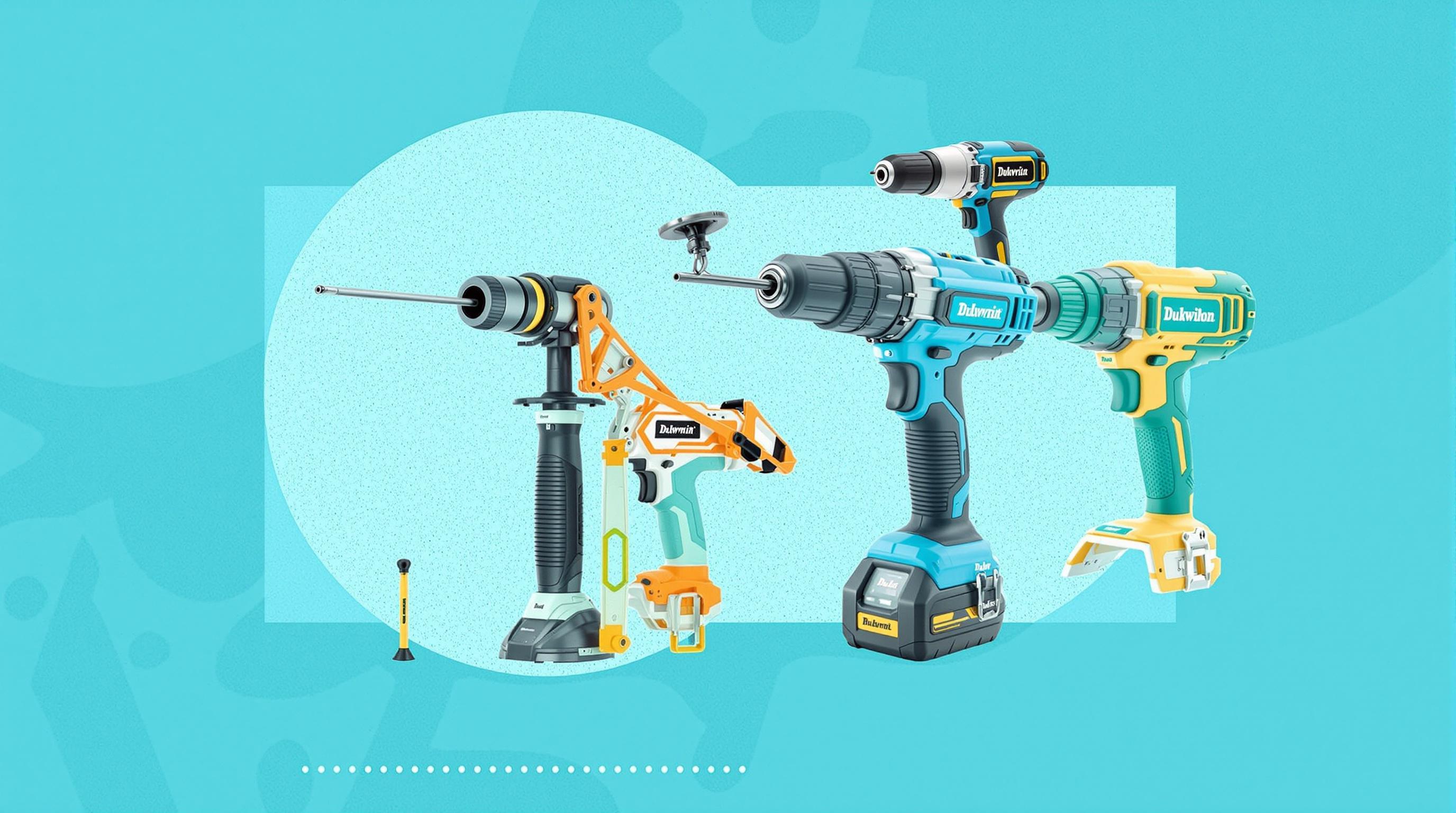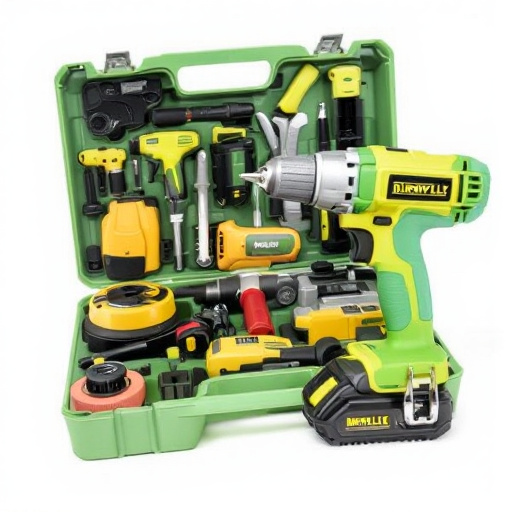Featured Articles
- 7 Game-Changing Electric Screwdrivers Released in the Last 5 Years Ranked for Ultimate DIY Efficiency
- Revolutionizing DIY: How Upcycled Home Tools are Shaping Sustainable Renovation Trends
- The Hidden World of DIY Biohacking: Unleashing Your Home Tools for Wellness Innovation
- The Rise of DIY Urban Gardening: Tools and Supplies for Crafting Green Spaces in Small Places
- The Rise of Eco-Friendly Home Tools: Transforming Sustainability into Everyday DIY Projects
Unleashing the Power of DIY: How Home Tool Innovations Contribute to Sustainable Living Trends
Unleashing the Power of DIY: How Home Tool Innovations Contribute to Sustainable Living Trends
The DIY movement is thriving, fueled by innovative home tools that are reshaping how we approach sustainable living. By combining creativity with practicality, these innovations empower individuals to reduce waste, save money, and contribute positively to the environment.
The Rise of DIY Culture
Remember when fixing something around your house meant searching for the nearest handyman in the phone book? Oh, the days of outdated resources! Fast forward to today, the rise of DIY (Do It Yourself) culture has revolutionized not just home improvement but also the way we conceptualize sustainability. A 2022 survey indicated that 61% of homeowners in the United States are now undertaking home improvement projects to create more sustainable living environments (Statista, 2022). People are trading “call a pro” for “I can do it myself!”
Innovative Tools: The Key to Empowerment
Modern innovations in home tools have unlocked new levels of DIY potential. Take the example of smart power tools: these gadgets often come equipped with sensors that guide you through projects step-by-step. If you’re building a raised garden bed, imagine having a cordless drill that tells you exactly how deep to drill for your screws. It's like having a personal contractor in your toolbox! Now tell me, what more could you ask for? Well, how about tools that also help you track your energy consumption?
Statistics That Speak Volumes
Believe it or not, recent reports show that 48% of Americans are now using tools powered by renewable energy sources for their home projects (U.S. Department of Energy, 2023). This is not just a fleeting trend; it reflects a growing commitment to fusion between technology and eco-friendliness. Moreover, the market for sustainable DIY home improvement tools is expected to grow by 25% over the next five years, a clear indication that home tool innovations are strongly aligned with consumer values toward sustainability.
Case Study: The Community Workshop
Let’s take a moment to look at a successful example of DIY culture contributing to sustainable living. The Community Workshop in Chicago has become a hub for innovation and eco-friendly practices. Here, participants learn to use state-of-the-art tools like CNC machines and laser cutters to create everything from furniture to art. The workshop emphasizes using reclaimed materials, leading to a league of eco-conscious makers who not only promote sustainable living but create a community around it.
The Role of Technology
Technology plays a significant role in this DIY renaissance. From apps that guide you through complex renovations to platforms that allow you to rent tools rather than own them, the digital age has made it easier than ever to engage in green living practices. Need a ladder for a weekend project? With just a few taps, you can find someone nearby willing to lend or rent you one. This model not only saves you money but significantly reduces tool waste and production.
Personal Testimony: A 30-Year-Old's Exploration
“I never thought I could build my own compost bin!” says Jenna, 30, a self-proclaimed DIY novice turned eco-warrior. After acquiring a circular saw and several tutorials on YouTube, Jenna crafted an efficient composting system in her small backyard. “Not only is it cheaper than store-bought compost bins, but I now have a sustainability project that recycles my kitchen waste. Plus, my plants are thriving!” Jenna's story illustrates how modern home tools can generate significant personal and environmental benefits.
Humor in DIY: Oops Moments & Useful Fails
Let’s face it: no DIY journey is complete without a few “oops” moments. Remember the viral DIY project of transforming an old dresser into a play kitchen? Well, for most of us, that's an aspiration rather than a reality. I once tried to create a herb garden, only to accidentally plant mint in the same pot as basil. If anyone needs to make an exotic mint-basil pesto, you know where to find me! But these humorous misadventures are part of the charm of DIY, as they remind us that learning is a journey, not a destination.
Building a Sustainable Future: The Tools We Need
What tools do we need to continue this fabulous trend? First, let’s talk about solar-powered gadgets. Whether it’s a solar-powered water pump for your garden or a solar charger for your power tools, these devices not only save energy but also reduce your carbon footprint. A 2023 study showed that DIY enthusiasts using solar power tools cut their energy consumed by 30% compared to traditional sources (Renewable Energy Journal, 2023). That’s some serious wattage savings while boosting your sustainable living goals!
Finding Your Community
Sustainable living is a team sport, and finding your community can amplify your DIY efforts. Local maker spaces, environmental workshops, and online communities are valuable resources packed with knowledge and ingenuity. By connecting with like-minded individuals, you can share tools, learn new techniques, and inspire each other to embark on exciting projects. Who knows, you might even form friendships that last beyond building benches and raised beds!
Economic Benefits of Sustainable DIY
Did you know that undertaking a few DIY projects can also save you a boatload of cash? Home improvements that incorporate sustainable practices can increase the resale value of your home, with studies indicating that homeowners recoup 80% of their investment in eco-friendly installations when they sell (National Association of Realtors, 2021). So not only are you contributing to a better planet, but you’re also making a savvy financial decision! Talk about a win-win!
A Call to Action: Get Your Hands Dirty
Don’t just sit there contemplating your next move—grab the nearest tool and unleash your inner DIY champion! There’s a whole world of home improvements waiting for you, from making your own compost to building your own solar oven. Consider starting small: your first project may even involve recycling something you already have lying around! If you’ve always wanted to build an herb garden, why not dive into it? Every little bit counts toward a more sustainable future.
The Final Takeaway
The evidence is mounting—DIY is more than just a trending hobby; it’s a movement that has the potential to transform our lives and our planet. Armed with innovative tools and a little creativity, we can all contribute to making the world a more sustainable place. So the next time you think about calling someone to fix a leaky faucet or replace a light fixture, just think: what could I do instead?
In the words of famous DIY-er and television personality Bob Vila, “The ultimate art is not to live, but to live well.” So why not start today? Gather your tools, enlist a buddy, and embark on this sustainable journey. Who knows? You might just create something beautiful while saving the planet, one tool at a time.




